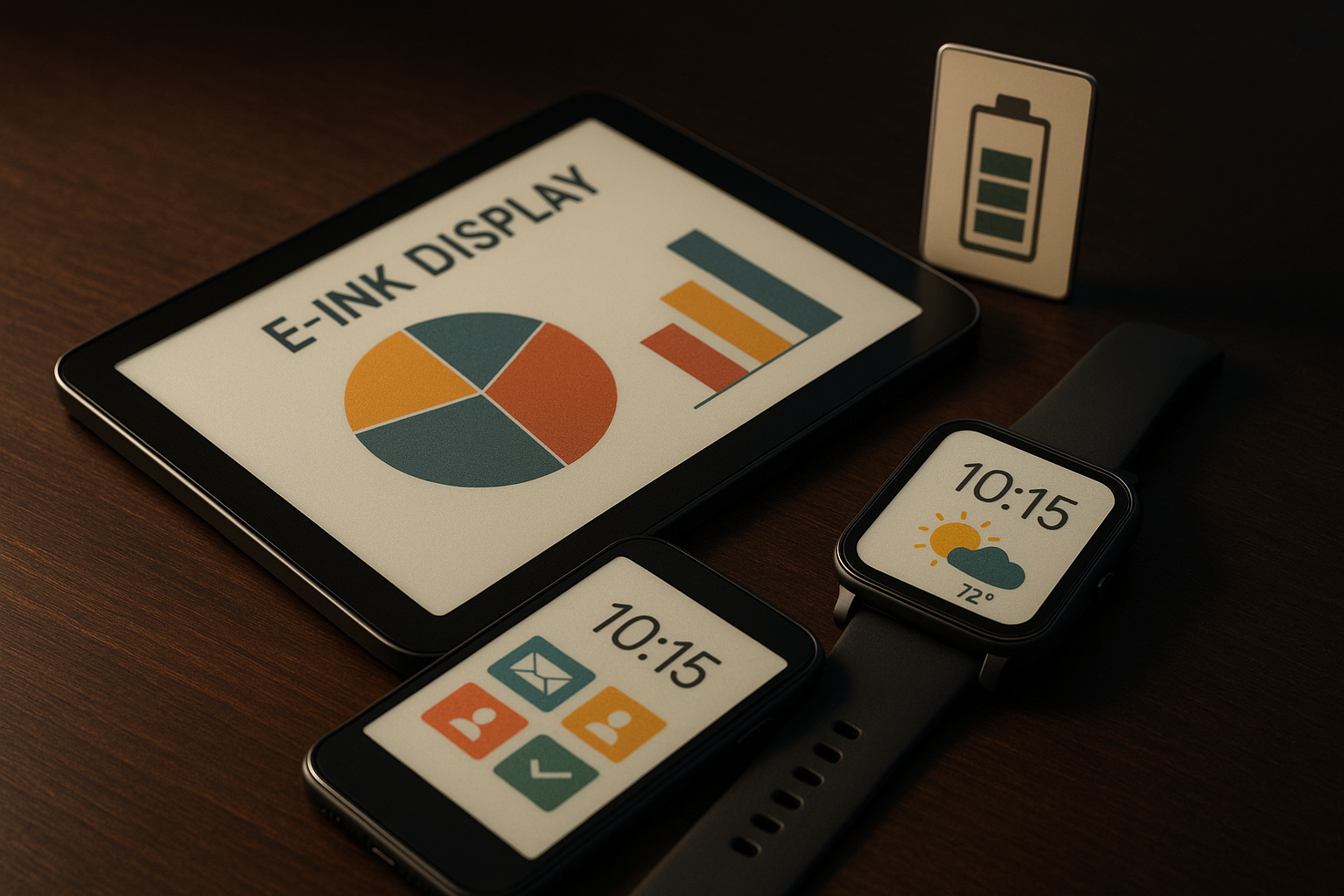Reinventing the Wheel: The Future of E-ink Displays
From analog to digital, the display technology has gone through a significant evolution over the years. One of the most exciting developments in recent years is E-ink, short for electronic ink. E-ink screens, known for their low power consumption and sunlight readability, are redefining the world of display technology.

A Look Back at E-ink’s Origins
Electronic ink was first developed in the 1970s at the Xerox Palo Alto Research Center. However, it wasn’t until 1997 that a company named E Ink Corporation was established to commercialize this technology. The first consumer application of E-ink was in e-readers, such as the Amazon Kindle, which hit the market in 2007.
E-ink in Today’s Tech Landscape
Today, E-ink is not just confined to e-readers. It’s being used in a variety of devices such as smartwatches, digital signage, and even smartphones. The YotaPhone, for example, was the first smartphone to feature an E-ink display on its back, offering a battery-saving alternative for users to read eBooks, check notifications, and more.
Unleashing the Potential of E-ink
What sets E-ink apart from traditional display technologies is its unique features. E-ink displays consume power only when the image changes, not when it’s static. This means E-ink screens can hold an image indefinitely without draining the battery. Additionally, E-ink displays are easy on the eyes, mimicking the appearance of ink on paper, making them ideal for long reading sessions.
The Future of E-ink Displays
E-ink is continuously evolving, with newer versions offering faster refresh rates and a broader color spectrum. For example, E Ink Kaleido, launched in 2020, supports up to 4096 colors, making it more suitable for comic books and magazines. Furthermore, E-ink technology has potential applications in other areas, such as smart home devices, wearables, and even electronic clothing.
E-ink’s Market Impact and Pricing
With the growing adoption of E-ink, the market is expected to reach USD 28.87 billion by 2026, according to a report by Market Research Future. As for the pricing, it varies greatly depending on the application. An E-ink e-reader, for instance, can range from $80 to several hundred dollars.
In conclusion, E-ink is a versatile technology with a promising future. With its unique properties of low power consumption and sunlight readability, E-ink is poised to redefine the display technology landscape. As we move towards a more sustainable and energy-efficient future, E-ink may just be the answer we need.






